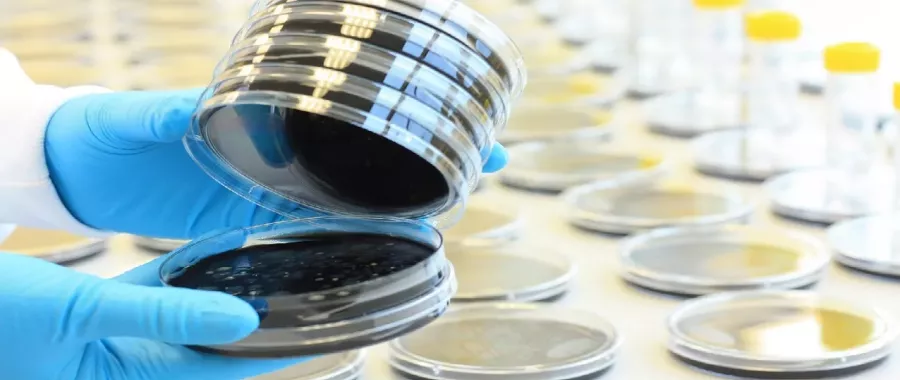While protecting your workforce against COVID-19 should remain of paramount importance, employers cannot afford to let their guard down when it comes to preventing exposure to other respiratory illnesses, such as Legionnaires’ disease.

Under the Health & Safety at Work Act 1974, employers have a duty of care to assess and control the risk of exposure to Legionella bacteria for their staff, contractors and visitors, and the HSE has confirmed that any duty holders who experience cases of Legionnaires’ disease or are the centre of an outbreak during the COVID-19 pandemic will have no exemption from prosecution.
In this blog, Paul Sear, national technical manager for SOCOTEC’s Water Hygiene team, outlines why the current focus on preventing another surge of COVID-19 infections should not compromise the control measures designed to prevent Legionnaires’ disease.
Why is the risk of Legionella more prevalent during the COVID-19 pandemic?
Certain premises – such as office blocks, hotels and sports centres – are likely to still be functioning at a reduced capacity, which can heighten the risk of stagnant water systems due to infrequent usage. Coupled with the extensive periods of warm weather that we are currently experiencing, these conditions provide the ideal environment for Legionella bacteria to thrive and, as a result, an increase in the risk of Legionnaires’ disease. This is a potentially fatal type of pneumonia caused by Legionella bacteria that is inhaled into the lungs, with aerosol-forming equipment such as showers posing a particularly high level of risk.
Due to the COVID-19 pandemic, compromised immune systems mean that a higher percentage of people will be more susceptible to contracting Legionnaires’ disease from a contaminated water supply. Therefore, it is absolutely vital that duty holders keep the level of risk as low as is reasonably practicable, both to protect the building’s occupants and to safeguard the NHS throughout this challenging and fast-moving situation.
However, even when taking all of the necessary precautions required to adequately mothball and recommission a building after a period of inactivity, there have been many cases where responsible persons have found that their water samples have tested positive for Legionella bacteria, despite regular flushing throughout reduced occupancy and during the lockdown.
What is the recommended course of action for recommissioning water systems after a period of inactivity?
Small and simple water systems
These types of systems are defined by HSG274 Part 2 as those that are mains fed with local point of use hot water systems (combination boilers and units with a capacity of 15 litres or less), such as dwellings or small offices. Additionally, SOCOTEC defines these as buildings with less than 10 rooms with water present.
Mothballed for less than 30 days where flushing has been undertaken
- Check water temperatures are compliant with HSG274 Part 2 at all outlets
- Re-occupy as normal.
Mothballed for 30 days or more or where flushing has not been undertaken
- As close to occupancy as possible, flush every hot and cold outlet (including attached equipment such as dishwashers) for at least five minutes
- It is recommended that those carrying out flushing minimise aerosol release or wear appropriate PPE
- Check hot and cold water temperatures are compliant with HSG274 Part 2 at all outlets
- Complete permit to open form for each building.
Large and complex water systems
Large and complex water systems are defined as those with 10 or more rooms with water and those with cold water tanks, stored hot water units greater than 15 litres, showers and spray taps.
Carry out a disinfection of the hot and cold water systems (including cold water tanks and hot water units) in accordance with HSG274 and PD855468:2015, making sure that the chemicals are drawn to all outlets and sentinel point checks are undertaken to confirm that the required levels have been achieved as close to handover as possible. If a chemical disinfection for your hot water system is not possible, undertake a thermal disinfection instead. Make sure to disinfect shower heads and spray outlets, before flushing all outlets to ensure a full turnover of the system and to refill cold water tanks with fresh water. Hot and cold water systems can then be reinstated, with temperature checks undertaken to ensure compliance with HSG274 Part 2 at all outlets and a permit to open form completed.
A sampling plan should also be put in place following disinfection that includes as a minimum cold water tanks, hot water units and sentinel points. Water samples should be taken pre and post-flush at least 48 hours after disinfection and be analysed for legionella bacteria. Potable water tanks and outlets should also be tested for coliforms, E.coli and TVCs at 22°C and 37°C.
Last but not least, it is important to ensure that a safe operating system is maintained, as well as flushing and temperature control (ensuring cold water is below 20°C, hot water is stored at 60°C or above and outlets reach a minimum of 50°C). If these control measures are not effective, alternatives such as Ultralox, chlorine dioxide and copper and silver ionisation can also be used.
For more information on managing water systems throughout the COVID-19 lockdown, click here.
What action is required if my water sample tests positive for Legionella bacteria?
Upon discovering the presence of Legionella in your water system, the important thing is not to panic but equally to not ignore the issue, no matter how low the count may be. If you have used a contractor to take water samples, it is recommended that you seek advice from them. HSG 274 Part 2 also provides guidance on the interpretation of sample results.
As a guide, the interpretation of Legionella results will be driven by whether the sample in question was taken pre or post-flush. A positive pre-flush and negative post-flush will indicate local contamination, while a negative pre-flush and positive post-flush (or both positive) may indicate system contamination. All sample results must be considered individually and together – the table below illustrates a straightforward interpretation of the results:

How can SOCOTEC help?
SOCOTEC’s Water Hygiene team can support your organisation with Legionella risk assessments, consultancy and management services, helping you to remain fully compliant and protecting the health and safety of your staff against a potential outbreak. They can also provide Legionella Awareness training to equip your employees with the confidence and expertise required to recognise the presence of Legionella bacteria in your water systems, alongside an understanding of the associated symptoms of Legionnaires’ disease.
Want to find out more about SOCOTEC's water hygiene services?

You might also like






Add new comment